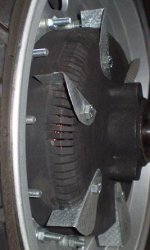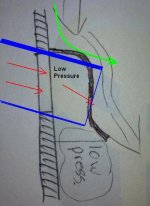I don^t know the real answer for your situation, but I understand your frustration.
I did a quick comparison in the simulator from ebike.ca. i compared two Clyte TC100 with each other, each at 84V, 100A, and put them next to each other as system A and B with only one difference, system A on a 26" wheel, and B on a 24 inch. Then slide the vertical dotted bar from left to right, and look at the numbers. In the low speeds (at high amps), they are relatively comparable, but above 60kmh, the time to overheat really starts to make a difference. There is a moment where the 26" overheats 3x as fast as the 24".
I am pretty sure that if you push your 26" cromotor to the maximum limits, yours will overheat much faster than "his" cromotor iin the 24".
Other things to look at are different battery to phase current. I have read that Kelly controllers are rated by phase current. However, you should look into how much current you are pulling on the battery side as well. This is the number the CA tells you. Was your peak current much higher than his?
And of course you did not mention whether he had his CA configured to keep temps low by reducing current. Because if he did, it is a perfectly nice explanation...













